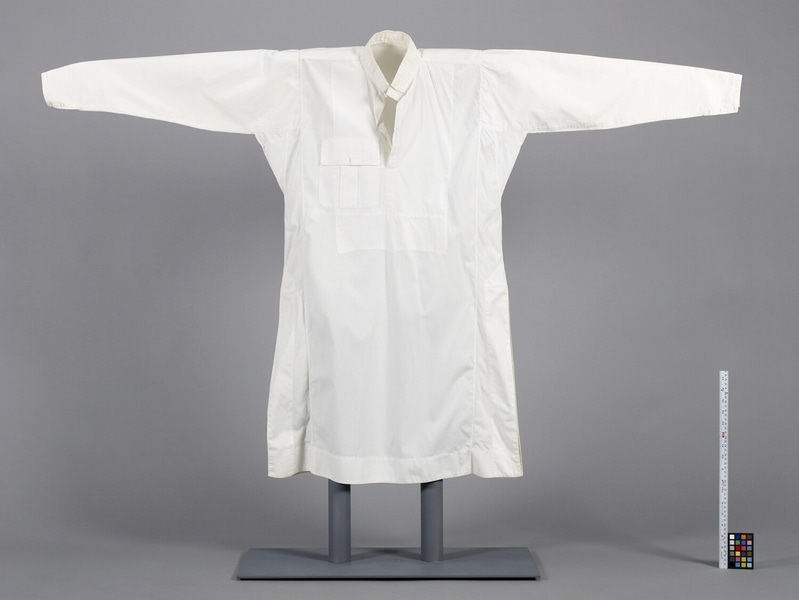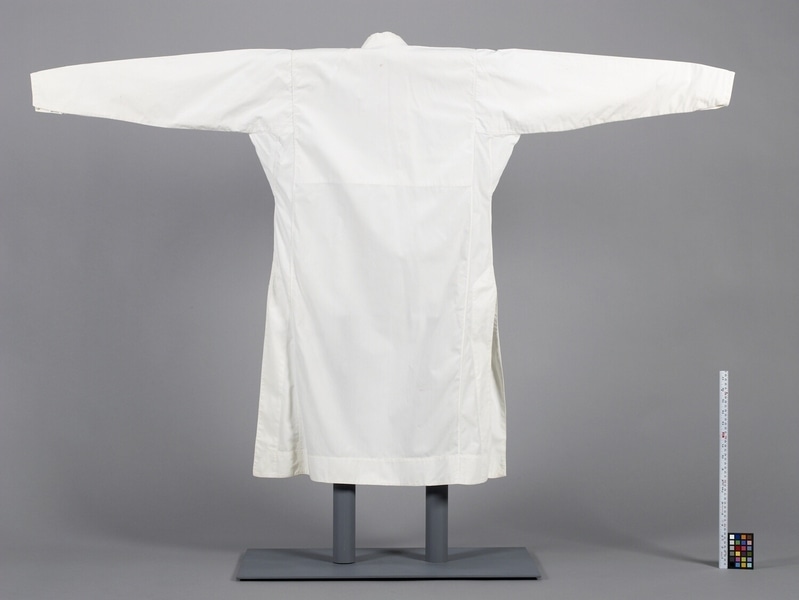Tunic Item Number: Ca35 a from the MOA: University of British Columbia


Description
White tunic that goes with trousers, shawl, and vest (Ca35 b-d) to form a suit. The tunic is white, opens on the sides and reaches mid-calf in length. The collar has a metal hook and clasp. There are two buttons beneath the collar on the front. The sleeves are long with three buttons on each cuff. There is a front pocket to one side with a button.
History Of Use
Traditional man's tunic; worn with pants (b), vest (d), and kuta cloth (c). Factory made cotton fabric. The cut of the tunic indicates that it is likely from a northern Ethiopian culture, either Amhara or Tigray, although white cotton woven clothing can be found throughout Ethiopia. The weaving techniques used in Ethiopian textiles are reminiscent of very early cultural exchange and trade between Ethiopian society and their neighbours. This weaving technique is found throughout the Middle East and India, and records show that as early as the first century, cotton was being imported into Ethiopia via the Red Sea.
Cultural Context
clothing; national dress
Item History
- Made in Ethiopia before 1974
- Collected during 1974
- Owned by Lemma Admasu before December 27, 1979
- Received from Lemma Admasu (Seller) and Museum of Anthropology Donations Fund (Funding source) on December 27, 1979
What
- Name
- Tunic
- Identification Number
- Ca35 a
- Type of Item
- tunic
- Material
- cotton fibre, plastic and metal
- Manufacturing Technique
- woven, machine stitched, stitched and dyed
- Overall
- height 103.0 cm, width 67.0 cm
Who
- Culture
- Ethiopian
- Previous Owner
- Lemma Admasu
- Received from
- Lemma Admasu (Seller) and Museum of Anthropology Donations Fund (Funding source)
Where
- Holding Institution
- MOA: University of British Columbia
- Made in
- Ethiopia
When
- Creation Date
- before 1974
- Collection Date
- during 1974
- Ownership Date
- before December 27, 1979
- Acquisition Date
- on December 27, 1979
Other
- Item Classes
- textiles
- Condition
- good
- Accession Number
- 0587/0005 a